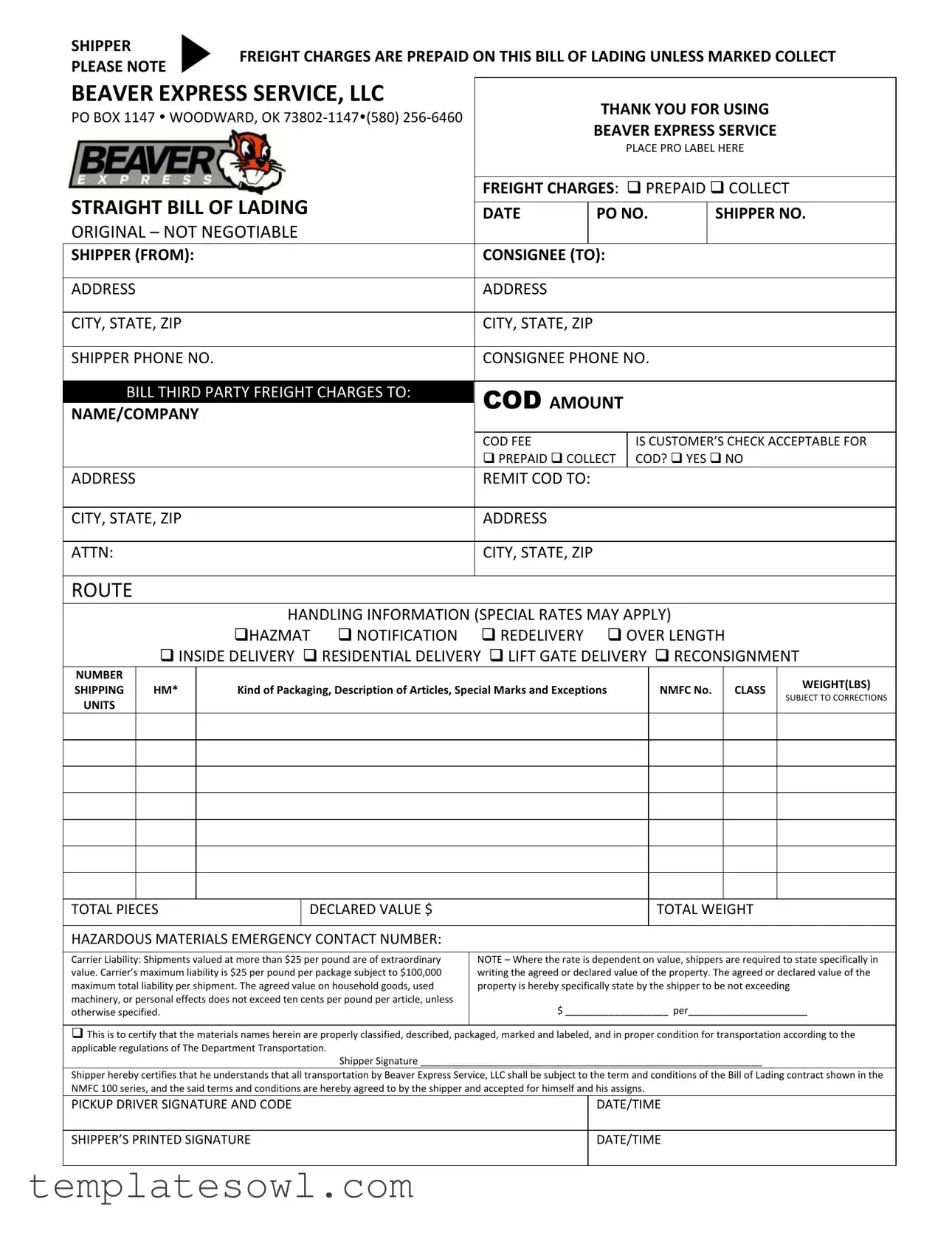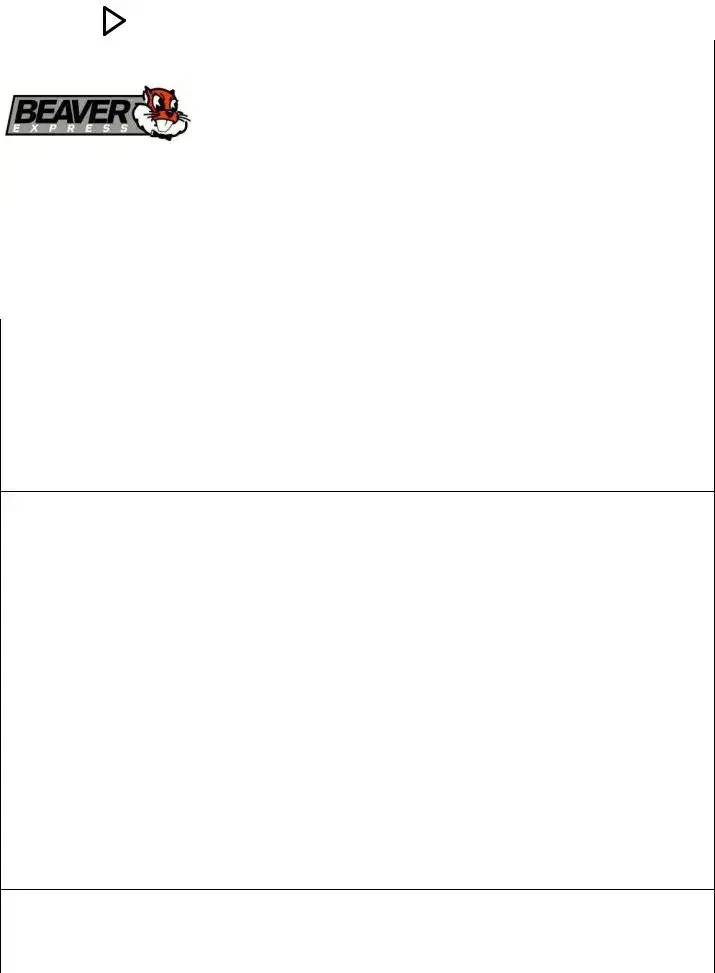What is a Beaver Express Bill Lading?
The Beaver Express Bill Lading is a document that serves as a receipt for goods being shipped. It outlines the responsibilities of the shipper and the carrier, ensuring that both parties are aware of the shipping terms. This document is crucial for tracking shipments and providing proof of delivery.
Are freight charges always prepaid?
Typically, shipments are prepaid on the Beaver Express Bill Lading form unless the “collect” option is marked. If "collect" is selected, the consignee will pay the freight charges upon delivery.
What information do I need to fill out on the form?
You will need to provide several key details on the form. This includes the shipper's and consignee's names and addresses, contact phone numbers, and the weight and description of the items being shipped. Additional information about special handling requirements or hazardous materials should also be included if applicable.
What should I do if I'm shipping hazardous materials?
If you are shipping hazardous materials, mark the applicable box on the form to indicate the shipment’s status. You must ensure that all materials are properly classified, described, packaged, marked, and labeled in accordance with Department of Transportation regulations.
What is the maximum liability of the carrier?
The carrier's maximum liability is $25 per pound per package, with a total limit of $100,000 per shipment. Shippers should declare the value of the items being shipped if they are worth more than this amount.
What if I want to use a COD (cash on delivery) option?
If you choose to use the COD option, you'll need to indicate the amount on the form. You can also specify whether a customer’s check is acceptable for COD transactions. Make sure to provide complete instructions about where to remit the COD payment.
Who should sign the Beaver Express Bill Lading?
The shipper must sign the Bill Lading, certifying that they understand and agree to the terms and conditions of the contract. The pickup driver will also sign the document upon pickup to confirm receipt of the shipment.

